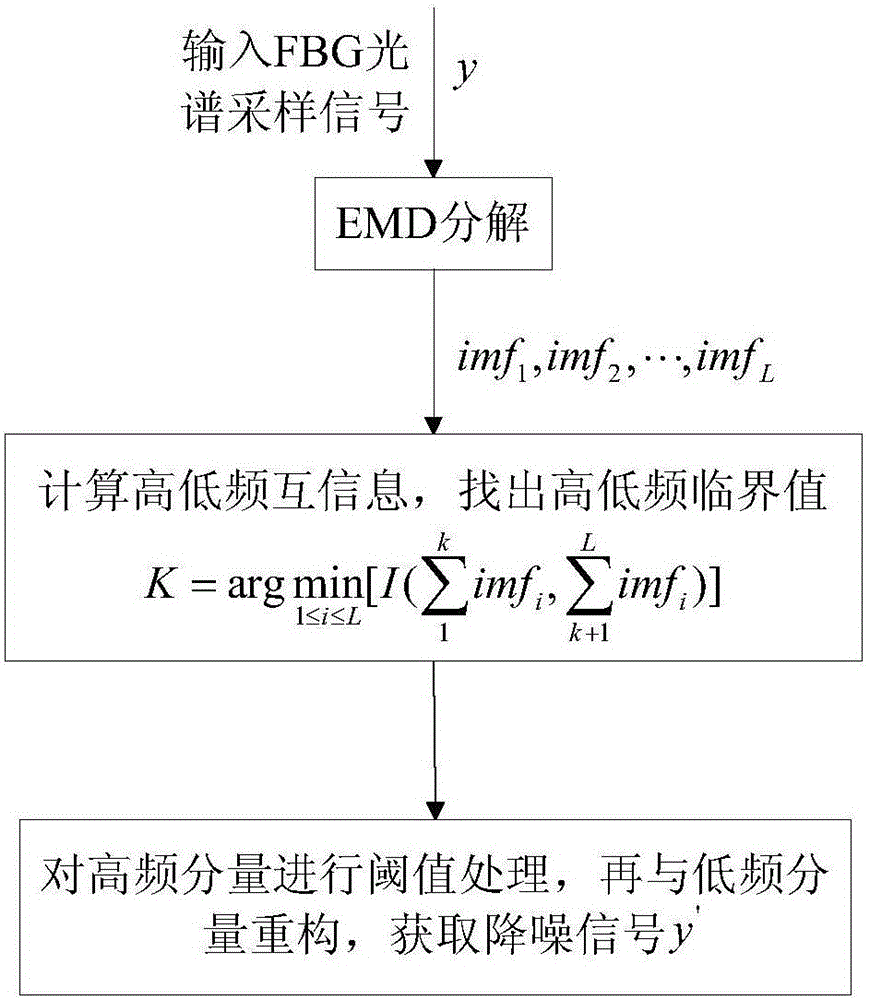FBG signal self-adapting restoration method based on compressed sensing
An adaptive repair and compressed sensing technology, applied in measuring devices, instruments, special recording/indicating devices, etc., can solve the problems of difficult signal reconstruction, large data volume, long running time, etc., to improve reconstruction accuracy and operation Time, the effect of eliminating the influence of noise
- Summary
- Abstract
- Description
- Claims
- Application Information
AI Technical Summary
Problems solved by technology
Method used
Image
Examples
Embodiment Construction
[0031] The preferred embodiments of the present invention will be described in detail below with reference to the accompanying drawings.
[0032] In this embodiment, the FBG sensor is combined with the vibration environment of the bridge to process the health monitoring data of the bridge. In order to improve the accuracy of later data analysis, it is necessary to repair the sampling signal. Data processing includes three parts. The first part is signal preprocessing, which is to denoise the FBG sampling signal to eliminate the interference of noise on the signal. The second part is to learn to obtain an adaptive dictionary, that is, to obtain a similar sample library by calculating the Euclidean distance between each segmented signal and the sample, and then perform K-SVD dictionary training on the sample library to obtain an adaptive dictionary that is more in line with the signal characteristics. The third part is signal reconstruction, using the proposed reconstruction al...
PUM
 Login to View More
Login to View More Abstract
Description
Claims
Application Information
 Login to View More
Login to View More - R&D
- Intellectual Property
- Life Sciences
- Materials
- Tech Scout
- Unparalleled Data Quality
- Higher Quality Content
- 60% Fewer Hallucinations
Browse by: Latest US Patents, China's latest patents, Technical Efficacy Thesaurus, Application Domain, Technology Topic, Popular Technical Reports.
© 2025 PatSnap. All rights reserved.Legal|Privacy policy|Modern Slavery Act Transparency Statement|Sitemap|About US| Contact US: help@patsnap.com



